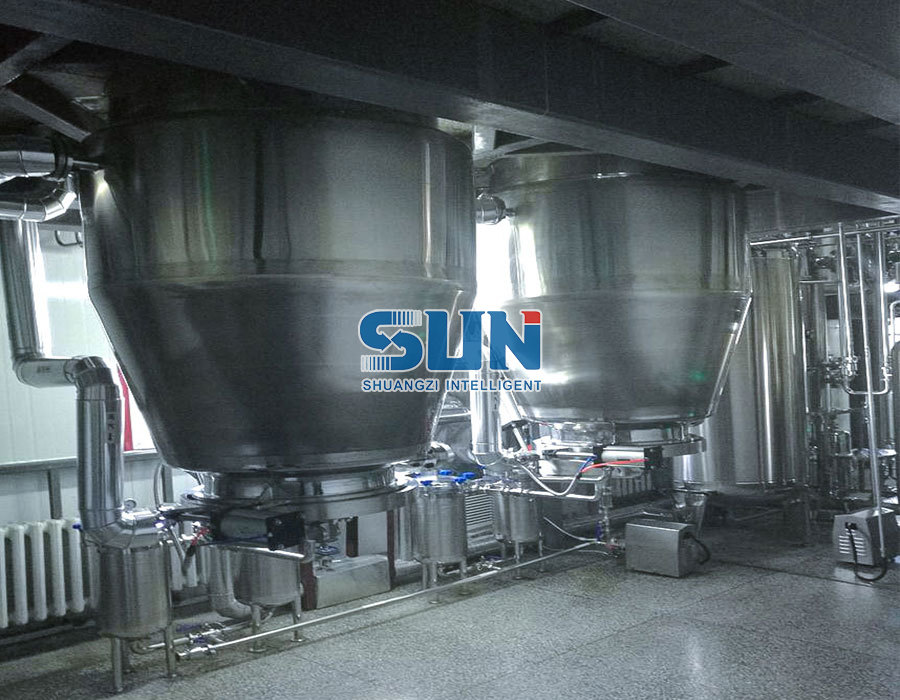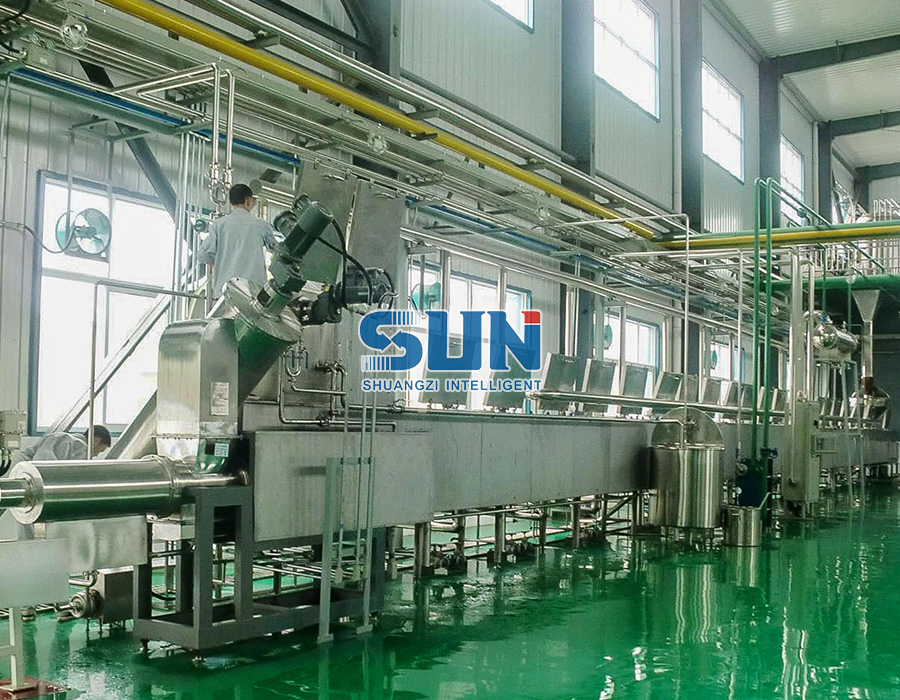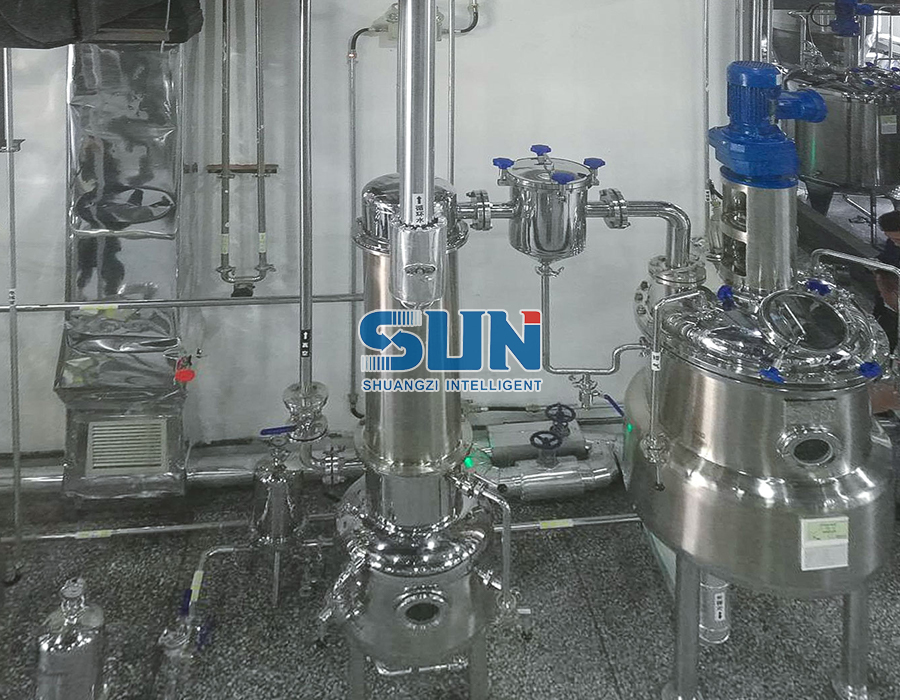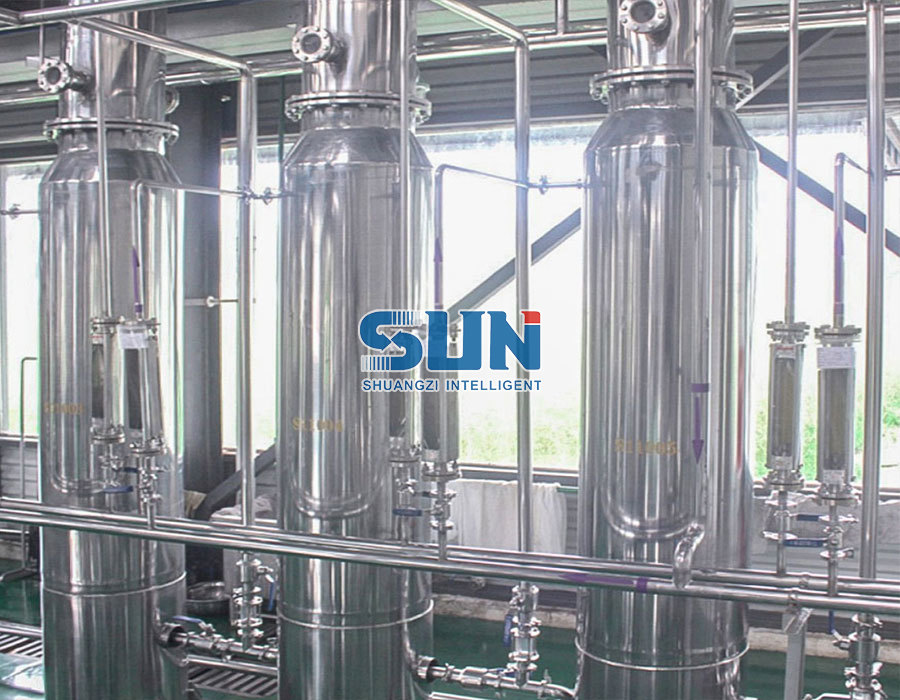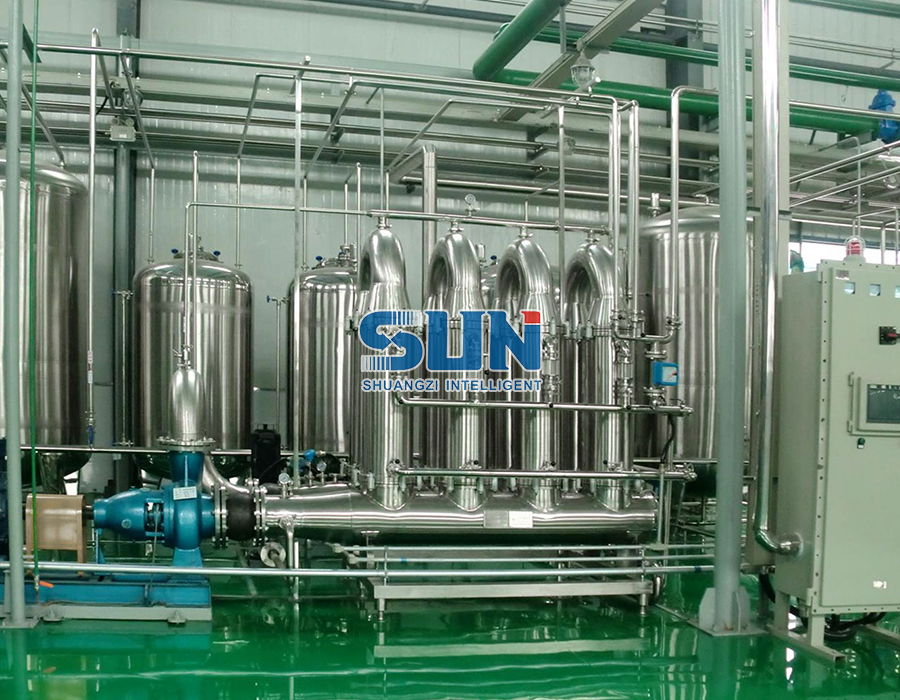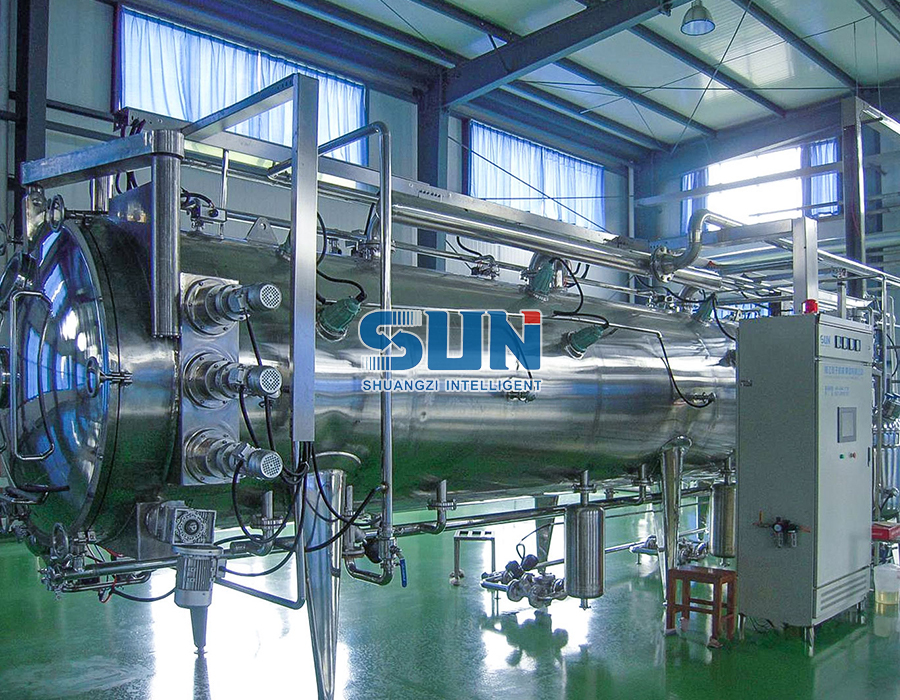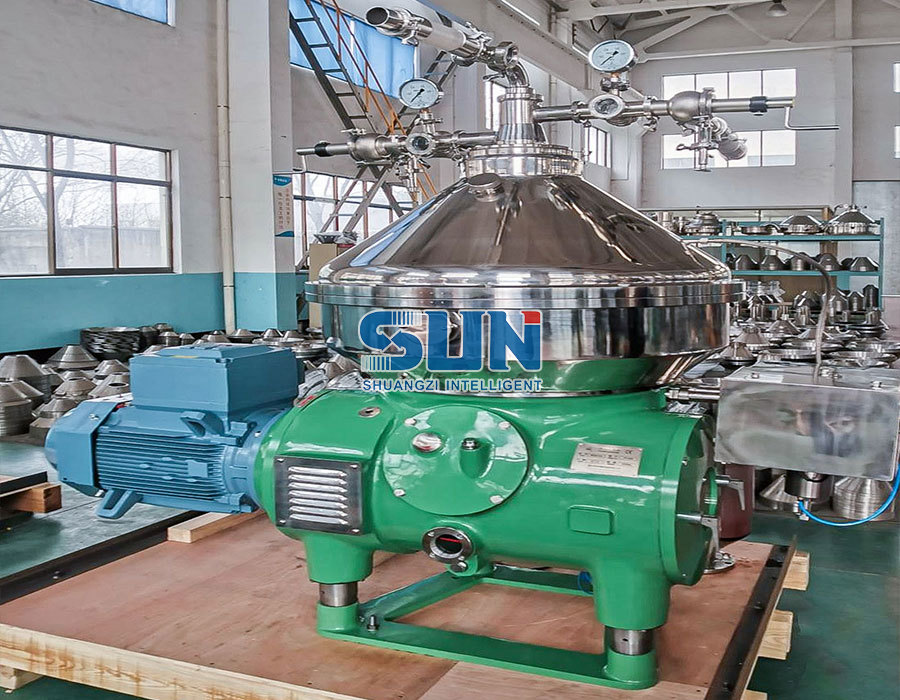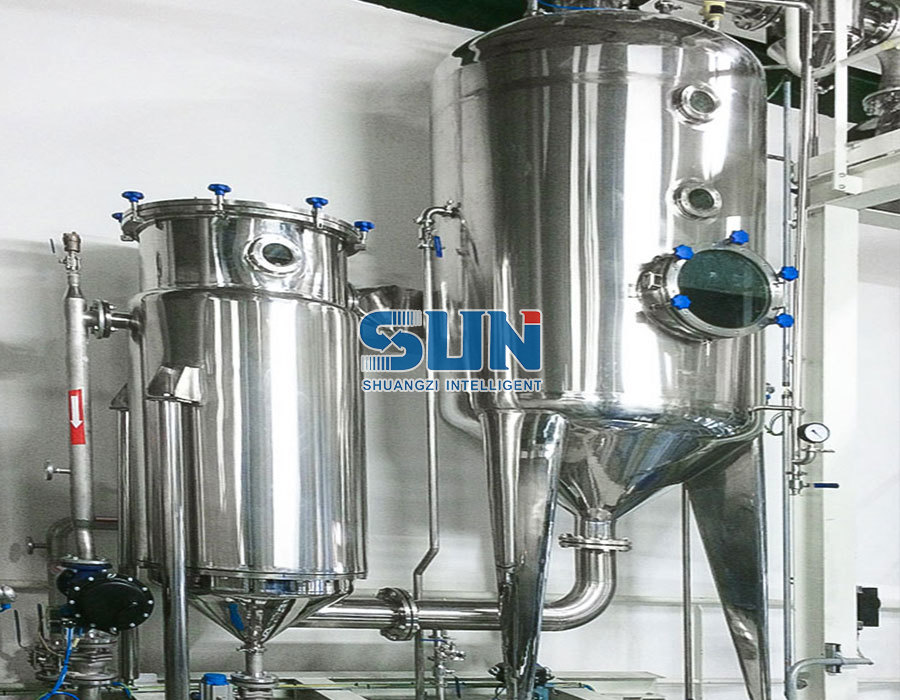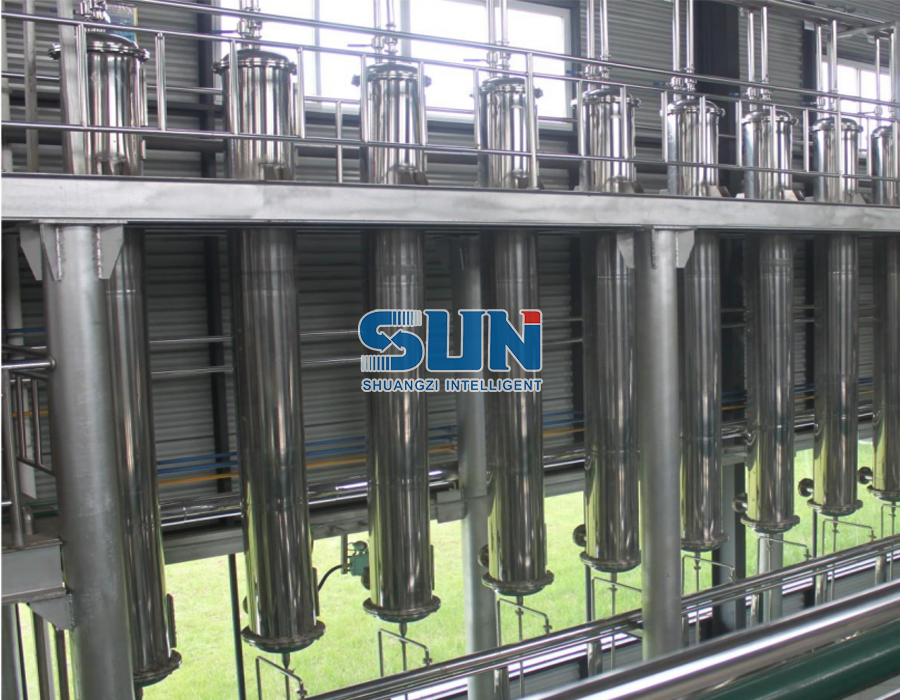In various industries such as food and beverage, pharmaceuticals, and chemicals, the storage and preparation of liquids require highly reliable and specialized equipment. Stainless steel liquid preparation storage tank have emerged as a preferred choice due to their numerous advantages over other materials. These tanks are designed to store, mix, and prepare a wide range of liquids while maintaining their integrity, quality, and safety.
Key Features of Stainless Steel Liquid Preparation Storage Tanks
1. Material Durability and Corrosion Resistance
Stainless steel is renowned for its exceptional durability and corrosion resistance. The alloying elements in stainless steel, such as chromium, nickel, and molybdenum, form a passive oxide layer on the surface of the tank. This layer acts as a protective barrier, preventing the penetration of corrosive substances, including acids, alkalis, and salts. As a result, stainless steel tanks can withstand harsh chemical environments and maintain their structural integrity over an extended period. For example, in the chemical industry, where highly corrosive chemicals are stored and processed, stainless steel tanks made of grades like 316L (which contains a higher molybdenum content for enhanced corrosion resistance) are commonly used.
2. Hygienic Design
In industries like food and pharmaceuticals, maintaining high levels of hygiene is of utmost importance. Stainless steel tanks offer a smooth and non - porous surface, which is easy to clean and sanitize. This reduces the risk of bacteria, mold, and other contaminants adhering to the tank walls. Additionally, the absence of crevices and joints (in well - designed tanks) minimizes the areas where dirt and microorganisms can accumulate. The use of polished stainless steel surfaces further enhances the hygienic properties, making it easier to meet strict regulatory requirements. For instance, in a dairy processing plant, stainless steel tanks are used to store milk and other dairy products, ensuring that the products remain free from contamination throughout the storage and preparation processes.
3. Temperature and Pressure Resistance
Stainless steel has excellent temperature and pressure resistance properties. It can withstand a wide range of temperatures, from extremely low temperatures in cryogenic applications to high temperatures in processes that involve heating liquids. This makes it suitable for industries such as the food and beverage industry, where liquids may need to be stored at different temperatures for fermentation, pasteurization, or storage. Moreover, stainless steel tanks can be designed to handle high pressures, which is crucial in applications such as the storage of compressed gases or in chemical reactions that occur under pressure. In a brewery, for example, stainless steel fermentation tanks need to withstand the pressure generated during the fermentation process as yeast converts sugars into alcohol and carbon dioxide.
4. Design Flexibility
Stainless steel liquid preparation storage tanks can be designed in various shapes and sizes to meet specific requirements. They can be cylindrical, rectangular, or even custom - shaped to fit into tight spaces or to accommodate specific production processes. Additionally, tanks can be equipped with different features such as agitators for mixing liquids, heating or cooling jackets for temperature control, and various types of fittings and valves for easy filling, draining, and sampling. For a pharmaceutical company that needs to prepare different formulations of liquid medications, a stainless steel tank with an adjustable agitator speed and a precise temperature control system can be customized to meet the exact requirements of each formulation.
Components of a Stainless Steel Liquid Preparation Storage Tank
1. Tank Body
The tank body is the main component of the storage tank and is typically made of stainless steel sheets. The thickness of the sheets depends on the size of the tank, the pressure it needs to withstand, and the type of liquid being stored. For larger tanks or those used for storing high - pressure liquids, thicker stainless steel sheets are used to ensure structural integrity. The tank body is often welded together using high - quality welding techniques to create a seamless and leak - proof container.
2. Agitator
An agitator is an essential component in tanks where liquids need to be mixed. It consists of a motor, a shaft, and impellers. The motor rotates the shaft, which in turn rotates the impellers, creating a mixing action within the tank. Agitators can be designed in different styles, such as propeller - type, turbine - type, or anchor - type, depending on the viscosity of the liquid and the desired mixing intensity. In a paint manufacturing plant, an agitator in a stainless steel tank is used to mix pigments, resins, and solvents to create a homogeneous paint formulation.
3. Heating and Cooling Systems
Many liquid preparation processes require temperature control. Heating and cooling systems can be integrated into stainless steel tanks to achieve this. Heating systems can use methods such as electric heating elements, steam - jacketed walls, or hot water circulation. Cooling systems, on the other hand, can involve the use of chilled water circulation or refrigerant - based cooling jackets. In a food processing factory, a stainless steel tank used for cooking and cooling sauces may be equipped with both a steam - heating system for cooking and a chilled - water cooling system for rapid cooling to prevent spoilage.
4. Fittings and Valves
Fittings and valves are used to connect the tank to other equipment in the production line, as well as to control the flow of liquids in and out of the tank. Common fittings include inlet and outlet pipes, sight glasses for monitoring the liquid level, manholes for access to the interior of the tank for cleaning and maintenance, and pressure gauges and safety valves to ensure safe operation. Valves such as ball valves, gate valves, and diaphragm valves are used to regulate the flow of liquids. In a chemical plant, a stainless steel storage tank may be connected to a pipeline system through a series of valves and fittings, allowing for the precise transfer of chemicals to and from the tank.
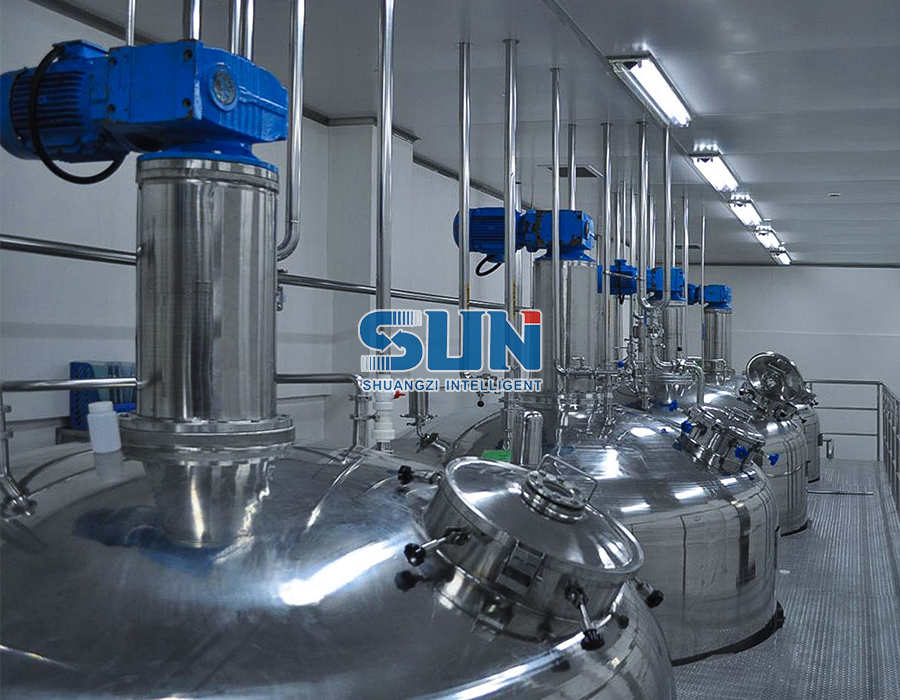
Applications in Different Industries
1. Food and Beverage Industry
In the food and beverage industry, stainless steel liquid preparation storage tanks are used extensively. They are used for storing raw materials such as water, milk, fruit juices, and syrups. During the production process, tanks with agitators are used to mix ingredients for products like sauces, dressings, and beverages. Fermentation tanks made of stainless steel are crucial in the production of beer, wine, and yogurt, where temperature and hygiene control are essential. After production, stainless steel tanks are used for storing finished products before packaging. For example, a large - scale juice production facility will use stainless steel tanks to store freshly squeezed fruit juices, mix them with other ingredients if necessary, and then store the final product until it is ready to be bottled.
2. Pharmaceutical Industry
The pharmaceutical industry has strict requirements for the storage and preparation of liquid medications. Stainless steel tanks are used to store active pharmaceutical ingredients (APIs) in liquid form, as well as for preparing formulations such as syrups, suspensions, and injectable solutions. The hygienic design of stainless steel tanks ensures that the medications remain free from contamination. Temperature - controlled tanks are used to store heat - sensitive medications. In a pharmaceutical manufacturing plant, a stainless steel tank may be used to prepare a batch of liquid antibiotics, with precise control over the mixing process, temperature, and pH levels to ensure the quality and efficacy of the final product.
3. Chemical Industry
In the chemical industry, stainless steel liquid preparation storage tanks are used to store and process a wide variety of chemicals. Due to their corrosion resistance, they can safely store corrosive chemicals such as acids, alkalis, and solvents. Tanks are also used in chemical reactions, where temperature and pressure control are critical. For example, in a petrochemical plant, stainless steel tanks may be used to store crude oil derivatives and to carry out chemical reactions to produce more refined products. The ability of stainless steel to withstand harsh chemical environments makes it an ideal choice for such applications.
Maintenance and Safety Considerations
1. Regular Cleaning and Inspection
To ensure the continued performance and hygiene of stainless steel liquid preparation storage tanks, regular cleaning and inspection are essential. Tanks should be cleaned thoroughly after each use, especially in industries where hygiene is crucial. This can involve using detergents, sanitizers, and high - pressure water jets. Inspections should be carried out regularly to check for signs of corrosion, leaks, or damage to components such as agitators and valves. Any signs of wear or damage should be addressed promptly to prevent further problems. In a food processing facility, tanks may be cleaned and inspected daily to ensure compliance with food safety regulations.
2. Safety Precautions
When working with stainless steel liquid preparation storage tanks, several safety precautions need to be taken. If the tank is used to store flammable or toxic liquids, proper ventilation and safety systems should be in place. Pressure - rated tanks should be equipped with safety valves to prevent over - pressurization. Operators should be trained on how to safely operate the tank, including how to handle valves, start and stop agitators, and monitor temperature and pressure. In a chemical plant, workers handling stainless steel tanks storing hazardous chemicals are required to wear appropriate personal protective equipment (PPE) such as gloves, goggles, and protective clothing.
Conclusion
Stainless steel liquid preparation storage tanks play a vital role in numerous industries. Their durability, corrosion resistance, hygienic design, and flexibility make them an ideal choice for storing, mixing, and preparing a wide range of liquids. By understanding their features, components, applications, and maintenance requirements, industries can make informed decisions when selecting and using these tanks to ensure efficient and safe operations. As technology continues to advance, stainless steel liquid preparation storage tanks are likely to see further improvements in design and functionality, meeting the evolving needs of different industries.


 英语
英语 俄语
俄语